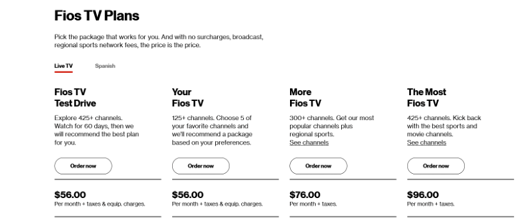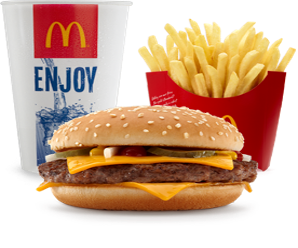Whether fans are flocking to your events or you’re struggling to bring fans back, there’s a proven way to make more money per ticketed fan regardless of any given night’s attendance.
Add to that you’ll have unrivaled data visibility into what any particular fan purchases, and you can start to drive more profitable fan relationships starting at the first event.
Why Ticket Bundling for Event-Based Businesses?
Ticket Bundling is the most profitable way to drive fan action. Whether driving attendance to an event on a historically slow night, encouraging a fan to buy a specific Food or Retail item, or driving mobile shopping cart transaction activity, bundling drives action! Why? Because when planned properly, bundling contains the optimal mix of items that have a high upside or high potential penetration rates.
What is Bundling?
Bundling is packaging products or services together, selling the combination at a discount vs. buying the bundle items individually (or a la carte). Depending on the situation and opportunity, bundling is a proven strategy to sell more products for more revenue and profits.
There are two (2) basic approaches to bundling, Pure Bundles, and Mixed Bundles.
Pure Bundles
Bundling is packaging products or services together, selling the combination at a discount vs. buying the bundle items individually (or a la carte). Depending on the situation and opportunity, bundling is a proven strategy to sell more products for more revenue and profits.
There are two (2) basic approaches to bundling, Pure Bundles, and Mixed Bundles.
A Pure Bundle is the only way those items can be purchased (meaning no a’ la carte). Pure Bundles can include the same product or service, or different products or services. Pure bundles are used when demand is expected to be strong. Examples are:
All-Inclusive Vacation Packages

Basic Cable Offerings

Mixed Bundles
A Mixed Bundle allows a customer to buy the individual items or the bundle. Again, the bundle can include the same products or services, or different products or services. Mixed bundles are used when seeking to increase share. Examples are:
McDonald's Value Meals

Cable TV, Phone, Internet Bundles

Why Does Ticket Bundling Work?
- Behavioral Psychology
- The Truth of Math
- Behavioral Psych related to Bundling is grounded in:
- Mental accounting-Mental Budgets
- Mental budgeting is the habit of setting aside certain monies for certain things and keeping them mentally in “buckets”, e.g., knowing about how much I will pay for a ticket. Knowing about how much I will spend on F&B at tonight’s game. Knowing whether I will buy retail merch or not at this afternoon’s event.
- Believing that if something is pre-paid and used later, it is viewed as an “investment” and has minimal impact on currently planned spending, thus the phrase, “Invest now, drink later, spend never”.
- Viewing a “gift” as free, and that gift has little impact on current spending.
- The right Ticket Bundle and Mental Budget Outcome
- Craft the right ticket bundle at the right price, and the fan knows they are getting a better deal vs. buying the non-bundled ticket.
- This is almost always a relative decision, not an absolute one:
- “Buy the solo ticket, or buy the bundle?”
- Taking mental budgeting and viewing it through the math lens, especially with event-based Ticket bundles, leads to very predictable incremental revenue and margin outcomes for spending per bundled ticketed fan vs. spending per non-bundled ticketed fan, and as a result, planning, and forecasting. That is because we can measure the following criteria:
- Redemption
- The amount of reward, load, or gift redeemed on any single receipt.
- Uplift
- The amount spent on a single receipt over the reward, load, or gifted amount.
- Breakage
- The amount of reward, load, or gift not used (or left remaining), after the use eligibility window (or promotion period).
- Add additional bundle inputs like F&B and Retail Merch penetration rates, and average transaction size, that we measure and map and it becomes clear how to make more revenue and margin dollars when bundling.
- Mental accounting-Mental Budgets
Using this knowledge, in addition to understanding bundle margins, can help give you the insights to create more compelling, profitable bundles.
Just as important but far more under-utilized, “Ticket or Membership Bundling” provides a critical component for driving fan engagement to analyze and understand customer buying behavior – by establishing a customer ID that can be tracked on every eligible purchase. Every person who enters an event where gate access is required has some sort of ticket (paper, mobile, wristband, card, RFID, etc.), and provides key personal data when purchasing that ticket.
Current Bundle Practices
If bundles are so great, why doesn’t everyone use them for event-based ticketing?
Back in 2005, IMS was the first to market in professional sports with the concept of “loaded tickets”. The concept, add value vs. discounting the price of a ticket. Great in theory, but early execution failed miserably. How’s that you say? Let’s look at the following example of how early ticket bundles were crafted:
- Pay $50 for a single ticket, or
- Pay $60 and get the same ticket and $10 to spend on F&B or Merch during the event
Another, perhaps easier way to look at it:
- Fan pays an additional $10 per ticket
- Fan gets ticket + $10 reward to spend on F&B or Merch during the event

In this example, the fan pays, in advance, $ for $ what they might spend in-venue. What’s the value prop or incentive for the fan to take the bundle vs. the solo ticket price? The original loaded ticket argument was it is more convenient than paying cash or using a credit card, but with today’s in-venue contactless payments advances, there is no value prop in this scenario. If teams took the EZ Pass approach, offering concession or team store speed lanes for pre-paid bundles, that would meet one of the lowest value motivators, ease and convenience (see below). But since that has not been done, where’s the incentive?
The above dollar-for-dollar bundle works if you have a super high demand for a specific ticket price type, and you deploy a “Pure Bundle” strategy. This bundle will make more money per bundled ticket vs. selling the non-bundled single ticket (including F&B/Merch), but there really is no incentive for the fan to buy the bundle unless this is their only option.
Taking this same bundle approach when selling a Mixed Bundle, meaning the fan can buy either the single ticket or the bundle, results in limited bundle purchases (again, where’s the incentive?). Clubs that deploy this approach have average bundle penetration of 3%-10% of ticket bundle options available to purchase.
Using Motivators and Math for Better Bundling
At IMS, any bundle planning work we do on behalf of our clients is driven by probable bundle outcome(s) for all spending per bundled ticket customer vs. the current standalone non-bundled ticket + current average in-venue spending (unless more specific data is available), for any number of ticket prices (price types).
So, our comparisons and measures of profitability are always relative. And because the elements of the bundle touch different venue areas, a ticket-only revenue lens can limit bundle possibilities. Something we often hear is, “If I give (or gift) more than the fan pays for the bundle, how will I not just cover the gift costs, but make money?” The answer is proper bundle scenario planning.
First, remember that guests will view pre-purchased items as investments that don’t impact current spending, and will view “gifts” as free, having little to no impact on current spending. So crafting the bundle that drives the purchase of the ticket and in-venue items, prior to event day, will influence mental accounting.
Second, are your bundles providing the relative value prop vs that stand-alone ticket price? Multiple research studies have revealed that customers need approximately a 30% discount (or value prop) vs. the current price to drive immediate purchase action. (Source: Entrepreneur Magazine)
So rather than discount that ticket price to try and drive new ticket sales, we help our customers craft bundles that drive a greater value proposition for their guests, while delivering superior revenue and margin dollars for them vs. the a’ la carte ticket and in-venue purchases.
So we have the elusive “win-win”, better for the guest, better for the team.
Contact IMS to schedule a meeting to learn how we can help you drive more profitable revenue.
Please share, and book a meeting to learn more.
IMS
IMS is a technology services company that has been serving the Retail Industry for over 25 years. While we specialize in serving small/medium businesses, we have also completed projects on some of the world’s biggest stages. We help businesses efficiently manage operations by improving processes, implementing unique and comprehensive integrations, and providing additional sources of data intelligence. We believe that by providing businesses with the tools, technology and insights needed to gather and analyze their data more effectively, we can help them create a competitive advantage.

